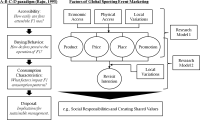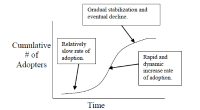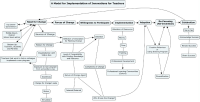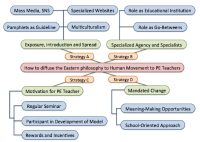 ISSN : 1598-2939
ISSN : 1598-2939
Olympism occupies an important place in our society through the Olympic Games (OJ) and the Youth Olympic Games (YOG). This neologism created by Pierre de Coubertin may appear as the preferred path for an education based on the harmonious development of body and mind. For all that, is the Olympism that Coubertin wanted to remain, at the dawn of the 21st century, an educational model? Can we imagine proposing and providing an Olympic education in the school system, university or sports? Can Olympic champions and should they serve as role models for the new generation?

The current study investigated whether athletes with negatively charged psychological reactivity that includes worry and negative affect experience more sleep disturbance in comparison with athletes whose psychological reactivity involves positive affect. Objective sleep monitoring for a period of 3-4 months was utilized in 32 junior elite athletes. Athletes completed the Positive and Negative Affect Scale, and the Penn State Worry Questionnaire before and after the sleep-monitoring period. Results showed changes and disturbances in sleep as a result of a specific psychological reactivity involving high worry and negative affect. On the other hand, positive affect was associated with normal sleep/wake patterns.



Introduction Although sport identity is a notion widely used in the literature to explain one’s attachment to the athletic role, a few valid psychometric tools exist in French to measure such notion. Objective Validation of a French version of Anderson’s (2004) Athletic Identity Questionnaire (AIQ) for a Québec French-speaking population. Method Participants (n = 389) completed the French version of the AIQ and were athletes, former athletes and non-athletes. Exploratory factor analysis and structural equation modeling were used to examine model structure, whereas ANOVAS helped determine construct validity regarding athletic status. Results A four factor first order structure emerged, as well as a second order structure composed of three of the four original facets. Significant differences for all four scales across the three groups appeared. Conclusion AIQ-French is a valid psychometric tool which can measure different degrees of athletic identity best represented jointly by the importance, appearance and competence scales.



Stair climbing is a form of physical activity that can be easily accessible in worksites and public settings, but it remains unclear whether stair climbing exercise is more effective in improving vascular health than walking exercise. The aim of this study was to compare the short-term effects of stair climbing exercise and walking exercise on vascular function in healthy young adults. Eighteen healthy adults were randomized to either the stair climbing exercise group (n=10) or the walking exercise group (n=8). The stair climbing exercise was performed inside a building, while the walking exercise involved a brisk walking exercise on the treadmill at the same exercise intensity (50-60% of heart rate reserve) for 2 weeks, 30 min/day, and 3 times/week. Peak oxygen uptake was measured by maximal cardiopulmonary exercise test. Carotid-femoral pulse wave velocity (c-f PWV) and flow-mediated dilation (FMD) as indexes of vascular function were measured using applanation tonometry and ultrasound machine, respectively. These variables were measured at baseline and again after 2 weeks of supervised exercise in both groups. FMD improved similarly in both groups (stair climbing: 11.5±2.2 to 14.3±2.4%, walking: 10.8±1.3 to 12.1±2.9%, time effect: p<0.05). However, an improvement in c-f PWV did not reach statistical significance in both groups (stair climbing: 6.83±0.8 to 6.40±0.88 m/s, walking: 6.61±0.8 to 6.46±0.85 m/s, p=0.051). No changes in peak oxygen uptake were observed in any group (stair climbing: 35.47±7.83 to 37.03±8.26 mL/kg/min, walking: 37.46±5.21 to 38.33±6.73 mL.kg/min, p=0.726). These findings suggest that both short-term stair climbing and treadmill walking exercises were comparatively effective in improving conduit artery endothelial function in healthy young adults.


Formula One has gained worldwide popularity, yet its success does not necessarily trickle down to the hosting cities. This study attempts to apply the A-B-C-D paradigm of global consumer behaviour into sport marketing and identifies differences among fan’s perception to marketing mixes and their intention to come back in three different hosting cities (i.e., Korea, China, and the US). Findings and discussion will help both researchers and practitioners to better comprehend and optimize their geocentric marketing strategies.


Purpose Fear of re-injury has been linked to functional joint instability after an anterior cruciate ligament injury. However, it is still unknown how fear and function are linked sequentially in patients with a knee sprain. Therefore, the purpose of this narrative review article was to provide a comprehensive summary of the interrelationships between neuromuscular control, cognition, and emotion, the neural mechanisms underlying cognitive and emotional regulation processes, and potential emotional regulatory training after knee ligamentous injury. Methods Previous research articles and more relevant research articles through a cited reference emphasizing fear of re-injury, cognition, emotion, neuromuscular control, and anterior cruciate ligament injury searched from PubMed databases were reviewed. Results Higher fear of re-injury in patients after an anterior cruciate ligament (ACL) injury may be associated with diminished neuromuscular control. As negative emotion requires better cognitive neural processing in the several brain’s regions that are also essential for maintaining dynamic joint stability, increased neural demands as a result of higher fear of re-injury can disrupt neuromuscular control and long-term pathological sequalae. Therefore, enhanced neural efficiency in cognitive control networks through executive function training may help ACL patients to regulate high fear of re-injury and dynamic restraint systems to maintain functional joint stability during intense physical activity. Conclusions As negative feelings can interfere with the cognitive processing for neuromuscular control, executive function training may improve affective control and muscle coordination. Understanding the interrelationships that exist between neuromuscular control, cognition and emotion help to not only develop better rehabilitation program, but also improve patient outcomes after an anterior cruciate ligament injury.

Referees as facilitators or conductors of every game play an extremely critical role in sports because they are one of the most important elements in providing pleasant and fair experiences to participants, spectators, and others in sporting events (Cuskelly & Hoye, 2013; Grunska, 2002). Referees’ role becomes even more significant in sanctioned, formal, or important competitions (Yip, Kim, & Love, 2017). To smoothly manage each game, referees should have not only sufficient knowledge of the rules and regulations of their sport but also a correct understanding of the aims of each event based on the level of competition so that they can adopt an appropriate standard in officiating in line with those aims. For instance, the objectives and values of recreational sports are fun, a healthy lifestyle, and skill development through sport participation rather than winning, which is the most highly valued element in competitive sports (Chelladurai & Kerwin, 2017). Therefore, referees’ approach to recreational sports should focus more on positive sport experiences and enjoyment than on winning. Sport officiating is a challenging and demanding task performed under great stress because referees are expected to continuously make correct, safe and fair judgments of every individual play during a match (Kim, 2017; Yip et al., 2017). Since referees are well aware of how important their calls are in a game, they make great efforts to remain focused on each play to meet these expectations. However, it is almost impossible for them to perform perfectly with no mistakes during every competition. Although bad calls unwittingly made by referees are often accepted as part of a game, it is not uncommon to see fans and media criticizing and blaming bad calls that may actually have altered the outcome of a match, which could ultimately intensify the stress and pressure on referees (Folkesson, Nyberg, Archer, & Norlander, 2002; Parsons & Bairner, 2015). Infuriated critics often go beyond merely blaming referees for bad calls. Players and coaches often verbally abuse and even physically attack referees when the players and coaches do not agree with their calls. For instance, soccer players who were angry about being shown a red card killed referees during amateur soccer matches in Argentina and Mexico in 2016 (Couzens, 2017; Gibson, 2016).



The aim of the present study was to find out the effects of 12 weeks of competitive phase specific training on basal levels of selected biochemical and haematological variables in male Taekwondo players. A total of 15 Indian male Taekwondo players (Age: 16.9±1.4 years; Height: 173.5±0.81 cm; Weight: 60.92±11.79 kg, BMI: 20.04±2.44 kg/m2) were volunteered for this study. Twelve weeks of competitive phase specific Taekwondo training was given to the participants for the perfection of technical skills and for the improvement of general physical conditioning abilities. Blood samples were collected from antecubital vein in the morning after overnight fasting and 24 hours of rest, both before and after training. The samples were analyzed for the selected biochemical and haematological parameters such as Lipid profile, Iron Profile, Creatine phosphokinase (CPK) Lactate dehydrogenase (LDH) and Complete Blood Picture (CBP). Data were analyzed by paired-t test by using SPSS software. A significant increase (P<0.05) of Serum Iron, Total cholesterol, HDL-cholesterol, Hematocrit, and Mean Corpuscular Volume were observed after training. Also a significant reduction (P<0.05) in total cholesterol/HDL-cholesterol Ratio, Lactate Dehydrogenase and Mean Corpuscular Hemoglobin Concentration (MCHC) were noted after the training. From this study it is concluded that the competitive phase specific Taekwondo training is effective for improving lipid profile and some of the biochemical parameters in national level male Taekwondo players and biochemical monitoring will be helpful for the evaluation of training effects and training related adaptations at molecular level.



This paper was designed to determine the strategies and tactics to engage and train the physical education teachers in the use of an Eastern philosophy to human movement for learning and for the promotion of physical literacy with their students. Five kinds of diffusion-related theories were used to make the strategies and tactics. To do so, four strategies composed of eleven tactics were suggested: the first strategy was exposure, introduction and spread including mass media, pamphlets, specialized web-site, and multiculruralism; the second strategy was to make specialized agency and specialists including role as go-betweens and educational institution; the third strategy was motivation for PE teachers including regular seminar, participant in development of model, and incentives; the last strategy was mandated change including meaning-making opportunities and school-oriented approach. The most important task is to introduce new knowledge, so among the four strategies, the first and second strategies should be first, after then to persuade teachers, the third strategy might be followed. If teacher tend not to want to use the concept of the Eastern philosophy on human movement continuously, despite the attempts by creators to persuade them, the last strategy can be applied.





Sprinting is characterized by a transition from propulsion via knee extending musculature during initial acceleration towards ischiocrural musculature thereafter. This may lead to a decrease of correlation of the maximal strength in the back squat and sprinting performance with increasing distance. The aim of this investigation was to show the correlation between maximal dynamic force of the extensor chain of the lower limbs and short distance sprinting performance. Therefore, sprinting performance (0-5, 0-10, 0-15, 0-20, 0-25, 0-30m) and one repetition maximum (1RM) of 51 physical education students were determined. Pearson correlation coefficients were calculated and show significant (p < 0.01) correlations for the relationships with the absolute 1RM (r = -0.661 to -0.792) and the relative 1RM (r = -0.648 to -0.739). However, a decrease in correlation over distance was not found. The results show that the maximal strength of lower extremities’ extensors is a basic requirement in short distance sprinting and should be considered in training.
A notable trend regarding the mega-events is that there are an increased number of events hosted in Oriental countries. At the same time, the aspect of Olympic legacy has become a fundamental force and hot topic for every single host city. The purpose of this study is to challenge the original Olympic legacy concept defined by the International Olympic Committee (IOC), which was premised on the Occident value. The IOC considers Olympic legacy to be insufficient. By comparing the Olympic legacy between Orient and Occident, this study discovered that the Orient Olympic legacy is a result of the Occident’s assimilation. In addition, the study found that the hosting city did not usually consider what the Olympic legacy could bring to a Third World. As such, there is a need for further studies to develop the Olympic legacy of acculturation and understand how the Olympic legacy can best be planned, sustained and extended.